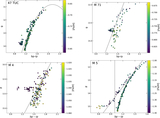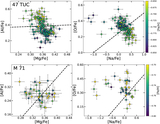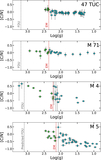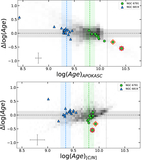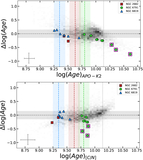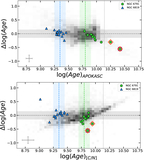Image Details
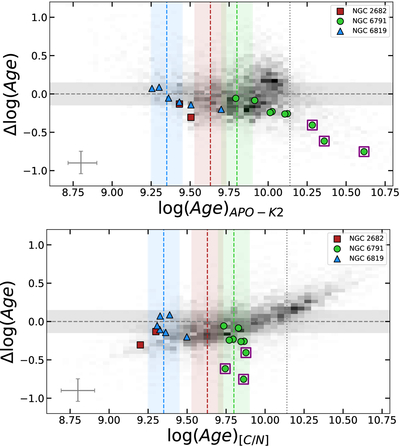
Caption: Figure 11.
﹩{\rm{\Delta }}\mathrm{log}\,(\mathrm{Age})﹩ as a function of APO-K2 log (age) (top) and [C/N]-based log (age) (bottom). The gray gradient shaded regions represent bins of field stars; darker bins imply more stars. The red squares, green circles, and blue triangles represent cluster member stars common to both samples NGC 2682 (M 67), NGC 6791, and NGC 6819, respectively. The vertical dashed lines are the T. Cantat-Gaudin et al. (2020)–determined ages for each cluster, and the respective shaded regions show the error in cluster age. The horizontal gray dashed line is where ﹩{\rm{\Delta }}\mathrm{log}\,(\mathrm{Age})=0﹩, with the surrounding gray region representing a delta of −0.1 and +0.1. The vertical gray dotted line shows the accepted age of the Universe. Median representative error bars are shown in each panel. Clusters member older than the Universe, highlighted with a purple square, were found to be in a binary system (A. M. Price-Whelan et al. 2020).
Copyright and Terms & Conditions
© 2025. The Author(s). Published by the American Astronomical Society.


